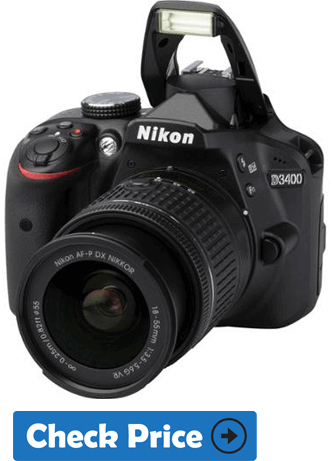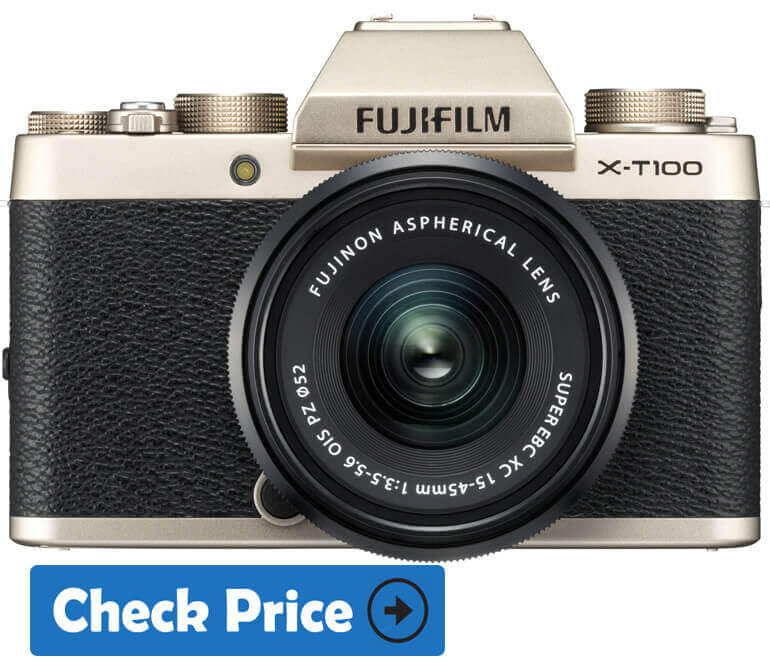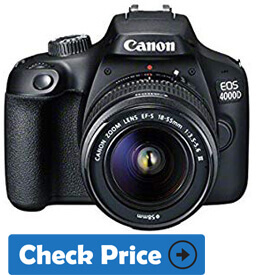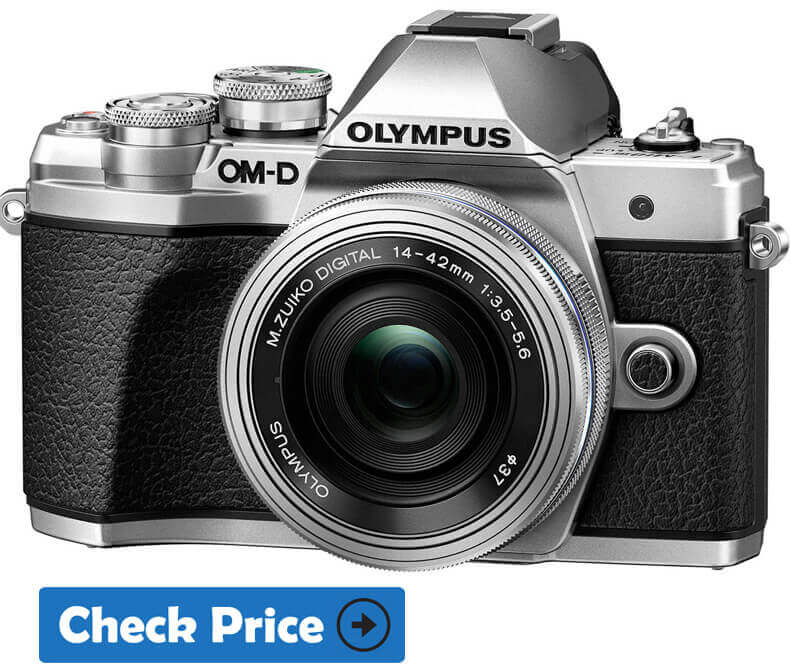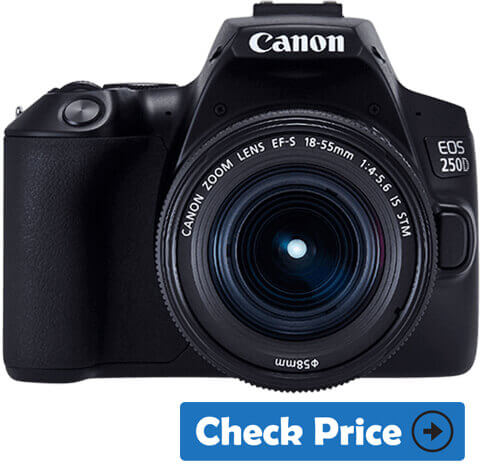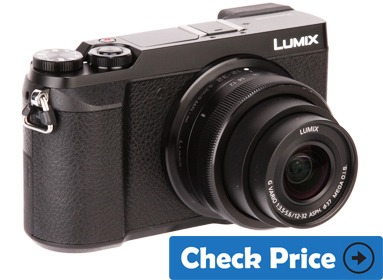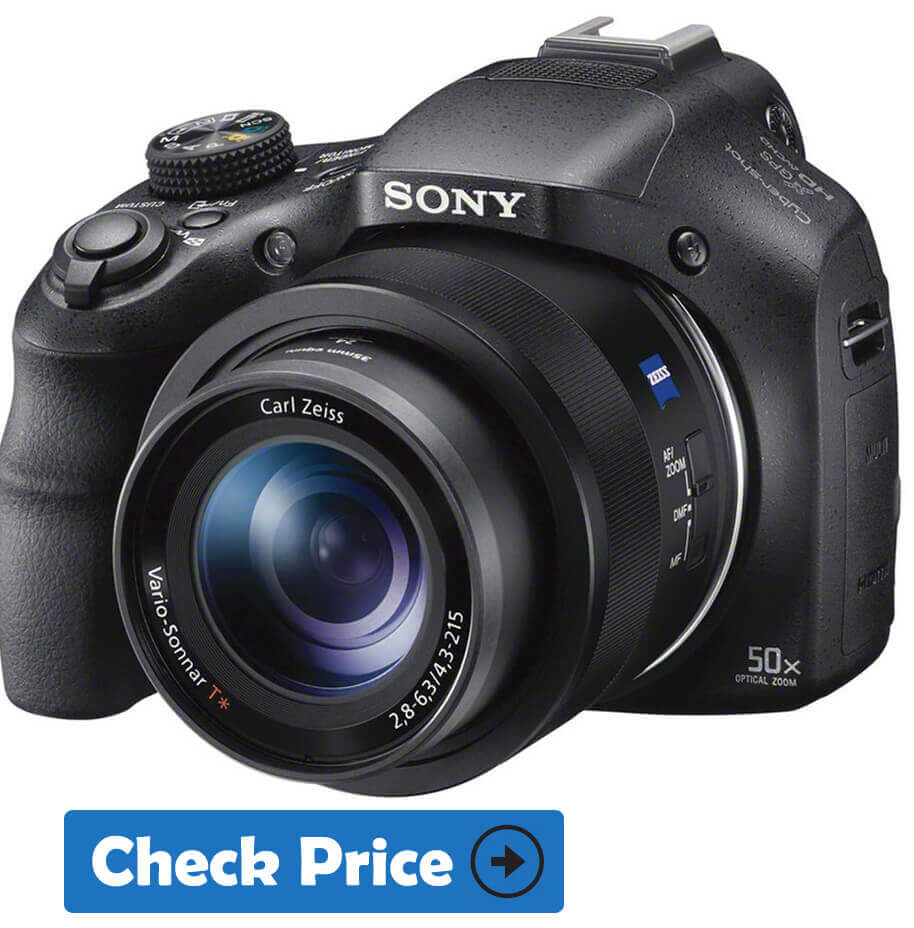Novice photographer? Here are the Best Beginner Cameras For Photography that will allow you to start your creative journey. If you’re ready to jump on your smartphone, then these are the best beginner digital cameras you can buy now in 2025.
Looking to buy your first camera? There are many choices on the market. Do you choose a camera starting with a brand with a rich photographic heritage or a snapper from a company that may have also made your television and microwave? Do you need an entry-level DSLR or a hybrid camera? And how much should you spend?
However, if a compact camera is better suited to your needs, here is another compilation with the best compact cameras, and if you are an athlete who likes water here you have a selection of the best underwater cameras.
That is why today we bring you this compilation of the best beginners cameras for photographers, an article in which we list a total of 7 cameras suitable for those who want to take their first steps with SLR cameras, but do not know which SLR or other beginner’s camera to buy.
Best Beginner Cameras For Photography
Table of Contents
Choosing a camera looks like an obstacle course: compact, bridge, hybrid, SLR, the scales are rich dozens of models and make the right choice is not obvious.
Manufacturers do not help you by also offering their old models for sale, especially during the end-of-year periods when promotions are numerous.
We have written a Buyer’s Guide, which will help you to take the buying decision.
Best Beginner Cameras For Photography | 2025 Comparison Table
Top Quality | Great Price | 5- Star Picks
| Camera Name | Resolution | MegaPixel | Price $$ |
|---|---|---|---|
| Nikon D3500(Editor's Choice) | HD 1080p | 24 MP | |
| Fujifilm X-T100 | 4K UHD 2160p | 24.2 MP | |
| Canon EOS 4000D Cheap | 4K UHD 2160p | 24 MP | |
| Olympus OM-D E-M10 Mk III | 4K UHD 2160p | 16 MP | |
| Canon EOS 250D | UHD 4K24p | 24.1 MP | |
| Panasonic Lumix DMC-GX80 | 4K | 16 MP | |
| Sony HX400V(Best Budget) | FHD 1080p | 20.4 MP |
Best Beginner Cameras For Photography | 2025 Products Overview
Here are the different ranges, their features, uses as well as the Pros and Cons of each type of camera.
1. Nikon D3500: Best Beginner Camera with Auto Focus (Editor’s Choice)
- Sensor Size: APS-C
- Resolution Max: 1080p FHD
- MegaPixel: 24.2MP
- Viewfinder: optical
- Lens (effective): 27-82.5mm
- Shooting speed: 5 fps
- Image Stabilizer: Yes
- Screen 3″
- Connectivity: Bluetooth, Wi-Fi
- Battery Life:
About:
A beginner’s digital SLR camera that shows you how to take photos – it’s the best new camera on the market.
If you are concerned that digital SLRs are complicated, do not be. Typical of the Nikon D3xxx camera series, the latest Nikon D3500 offers a brilliant ‘Guide’ shooting mode.
This is a fully interactive tutorial on photography, broadcast via the rear LCD screen. It explains how, when and why to use different camera settings to get the best possible effect, simply and efficiently. The controls on the camera are just as simple and easy to master. But, compared to some competing DSLRs, the Nikon D3500 is less able to grow with you as you learn new tricks and techniques.
- The Nikon D3500 has a monocoque structure that, as I said, offers a certain solidity once in the hand.
- The grip is very deep, however, the measures, rather discreet camera body.
- The depth of the handle, really comfortable, and the aesthetic cleanliness of the upper plate of the chamber.
- Autofocus for live view and movie capture is also very slow. Overall, however, the quality and performance of the image are very good and the burst rate of 5 frames per second is sporty for a basic digital SLR. If you like its appearance, we advise you to buy a Nikon AF-P DX 18-55mm f / 3.5-5.6G VR lens while you’re there.
- The battery lasts for up to 1,200 shots on a single charge.
- A variety of special effects are available to creatively refine the appearance of images in the camera, such as night vision, super vivid, pop, photo illustration, toy camera effects, miniature effects, selected colors, silhouettes, high keys, and low keys.
- The automatic scene selector is an automatic mode that intelligently identifies the subject and the shooting scene, selects and applies the appropriate scene mode, and adjusts the exposure settings to better represent the scene in question.
- Bluetooth and Wifi connectivity for wireless sharing of images to mobile devices.
- Value for money
- Overall best picture quality
- Easy for beginners
- Responsive autofocus
- 5fps continuous shooting
- Fixed rear screen
- No 4K video
2. Fujifilm X-T100
- Sensor Size: APS-C
- Resolution Max: 1080p
- MegaPixel: 24.2MP
- Viewfinder: Electronic
- Lens (effective): 27-82.5mm
- Shooting speed: 5fps
- Image Stabilizer: Yes
- Screen 3″
- Connectivity: Bluetooth
- Battery Life:
About:
For some people, a day is exactly the same as another day. Every day is unique to you. Only you can see your story. Every moment is memory waiting to be captured. FUJIFILM X-T100 is a friend of everyday life and can record a day through photos.
The FUJIFILM X-T100 has the essential elements to make every aspect of your photograph look special, such as natural skin tone, beautiful color reproduction, low noise in dark environments, and excellent edge-to-edge resolution. Thanks to FUJIFILM technology established for over 80 years in the photographic industry, you can trust that exceptional images will be created.
- Design and build quality are solid
- Use 4K movies to capture the surrounding world in ultra-high resolution and bring the atmosphere and excitement of the scene to life.
- You can record fast-moving objects with continuous high-resolution and high-speed shooting. Select the best shot of 15 photos taken per second.
- It is equipped with an APS-C size image sensor that is 14 times the sensor inside a conventional smartphone. This is essential for capturing high-quality images at low light and creating a beautiful background blur effect known as Bokeh.
- High-performance EVF with a retro body makes it possible to create clear photos even in sunlight. This experience is a real sense of photography. Only the electronic viewfinder can see exactly what the final result will be before taking a picture.
- The 3.0-inch LCD monitor can be rotated and tilted horizontally and has a touch screen function. Horizontal rotation is essential for taking self-portraits in both still and video modes. Vertical tilt is useful when you want to take a picture up and down. The FUJIFILM X-T100 has a touch control and self-timer mode, and various shooting options.
- You can add an artistic touch without the need for a computer and use the camera’s advanced filters to highlight the best aspects of the subject.
- Use the conventional mode dial to quickly change shooting modes. Select from SR +, Program Auto, Aperture Priority, Shutter Priority, or Complete Manual.
- The multi-focus mode adds multiple images to produce a sharp image with a surprisingly deep depth of field.
- Advanced automatic SR mode recognizes the scene and the subject you are looking at and automatically optimizes the camera settings and focus. You can take the best photos with minimal effort.
- battery capable of 430 frames per charge
- Pair your FUJIFILM X-T100 to a compatible smartphone or tablet using Bluetooth to seamlessly transfer images for easy sharing with friends.
- Super Intelligent Flash
- Multi Focus option
3. Canon EOS 4000D: Best Beginners Cheap Cameras
- Sensor Size: APS-C
- Resolution Max: 2K 1080p FHD
- MegaPixel: 18 MP
- Viewfinder: Yes
- Lens (effective): 18-55 mm
- Shooting speed: 3 fps
- Image Stabilizer: Yes
- Screen 2.7″
- Connectivity: usb
- Battery Life:
About:
If you're looking for a model that can be little more than a beginner's SLR, then the Canon EOS 800D, released in 2017, could offer you an interesting margin of progression and more satisfying features.
A simple outfit that reduces the cost. Nobody wants to buy an expensive camera, only to discover that photography is not for them.
- The OLED electronic viewfinder with 2.36m dots is used for eye-level photography, and you can see it comfortably at a magnification of 0.62x.
- A 3.0-inch 1.04m dot touchscreen LCD on the back is also available, and a unique 3-way tilt design allows front-facing self-portraits as well as high- and low-angle photography.
- A removable grip is included to improve handling.
- Canon limits the risks with this DSLR camera and EF-S kit 18-55 mm f / 3.5-5.6 III remarkably cheap, it is suitable for beginners, with the same mode of automatic shooting “intelligent” and the even more expensive Canon camera features guide.
- The “Fast” menu is generally intuitive and offers many scene modes as well as more advanced shooting modes.
- The auto creative mode also lets you switch from “base zone” mode to “creative zone” mode. The 18 MPa image sensor is a bit lacking in megapixels compared to most current DSLRs, and larger reductions have been made in other areas.
- In terms of speed management, the burst mode allows you to take 5 frames per second and the shutter fires at 1/4000 e, which allows you to choose the best photograph of a moving series without difficulty, in the good average of the current SLR cameras.
- In terms of sensitivity, ISOs are up to 12,800, which allows taking pictures in the dark with a relatively imperceptible noise level of up to ISO 1,600 or more, an acceptable level for occasional use in extreme conditions.
- At the level of the photos, RAW or JPEG, these can be visualized on the super LCD touch screen of 7.7 cm, which has the immense advantage to be reclining on 180 ° thanks to its mounting on the ball joint. This device is ideal for taking pictures in difficult viewing conditions that requires deporting the camera while keeping an eye on the frame.
- Autofocus can, therefore, be done by a simple touch of the finger on the preview screen if the reflex sight does not tell you anything. This is particularly the case for eyeglass wearers! The autofocus on 19 crossed collimators is very effective in the tracking of moving subjects. In full HD video mode, provided by a Hybrid CMOS AF III system, it is a real plus that keeps the subject sharp, in Full HD mode at 25 frames per second or in HD mode at 50 frames per second.
- The ergonomics of the whole case is efficient and rather compact for a reflex camera. The rubber grip of the grip is a real plus, especially if you add a slightly heavy lens. At 550g, the case is rather in a high range. Be careful therefore to choose a good bag if you have to carry it all day.
- If the box does not include a GPS function, a function that goes very well, it includes all the connectivity of the most recent boxes, especially the WI-FI and NFC connectivity, in order to control your camera from your SLR camera. smartphone to take, for example, remote photos or automate the taking of time-lapses.
- Compact 15-45mm kit lens
- A combination of value and style
- Consistently sharp shots
- The viewfinder lacks a diopter adjustment
4. Olympus OM-D E-M10 Mk III A very good beginner’s camera
- Sensor Size: Micro 4/3
- Resolution Max: 4k
- MegaPixel: 16.1 MP
- Viewfinder: electronic
- Lens (effective): 27-82.5mm
- Shooting speed: 8.6 fps
- Image Stabilizer: Yes
- Screen 3″ touch
- Connectivity: Wi-Fi
- Battery Life:
About:
The E-M10 III is the cheapest and most user-friendly model for beginners in the current OM-D range. Even in this case, it has some fabulous features in its tiny and beautifully designed body. Style is pleasing to the eye, as is the high resolution electronic viewfinder and high-resolution tilt touch screen.
- It’s a compact “crepe” design and its motorized zoom system is ideal for film capture.
- The design of the controls has not been modified, compared to the previous version. However, the body has been reworked; besides being a bit heavier. In addition, the front and rear handles are now larger; which makes the grip safer.
- The camera can film 4k UHD movies
- The integrated 5-axis image stabilization works with any lens, and the 14-42mm EZ zoom lens is a pleasure to use.
- The fast shooting at a maximum rate of 8.6 fps. However, although the Micro Four Thirds format allows cameras and lenses to be exceptionally compact, the number of megapixels is often less than generous.
- The 16.1MP image sensor of this camera is excellent.
- The E-M10 Mark III selects the corresponding mode of operation for its five-axis image stabilization system automatically; as necessary, depending on whether the user is simply moving or doing everything possible to keep the camera steady.
- This camera has two new art filter options. As well as, it has better movie capture features, with the incorporation of 4K movie capture into the camera.
- The camera has built-in Wi-Fi to connect to a smartphone, using Olympus Image Share for Android and iOS. This well-designed application makes it easy to copy your favorite photos on your phone to share them on social networks: simply start Wi-Fi by pressing a small touch button on the top left of the screen and turn on the application.
- It also allows full remote control of the camera from the phone, with a Live View screen. The application can even use your phone’s GPS to record a trace of your location, and then use this data to geo-tag your photos based on the date and time they were taken.
- Advanced photography mode option
- 121-point autofocus system
- Camera bag & 16 GB memory card included
- lack of microphone or headphone jacks
5. Canon EOS 250D
- Sensor Size: APS-C
- Resolution Max: 1080p
- MegaPixel: 24.2MP
- Viewfinder: optical
- Lens (effective): 27-82.5 mm
- Shooting speed: 5 fps
- Image Stabilizer: Yes
- Screen 3″ Flip
- Connectivity: Wi-Fi Bluetooth
- Battery Life:
About:
The Canon EOS 250D SLR camera will ideally accompany you in your search for the ultimate shot! Find a 24.1 megapixel CMOS sensor in APS-C format, a high performance autofocus system, high definition movies, an adjustable touch screen and Wi-Fi and Bluetooth wireless connectivity.
Accessible to all, this model includes a simplified interface with technical advice and practical assistance. Enough to exploit all your creative potential and take extraordinary photos!
- Its compact size and light weight make this reflection a great companion to explore your creativity!
- Capture 4K videos and 24.1 megapixel photos with high accuracy and lots of color. The APS-C size sensor and the DIGIC 8 processor guarantee excellent results even with low lighting.
- Capture every moment of your life with the Ultra HD 24p video function and relive the sequences at home! Practical on a daily basis, this Canon model includes a user interface that will guide you step by step through the discovery of the features and principles of the photos. Once the bases are fully acquired, you can use Assisted Creation mode to affirm their style.
- The 3-inch touch screen and the swivel screen offer original framing angles. Enjoy an efficient screen view with the double pixel autofocus system for photos that always look great! An optical viewfinder is also available to guarantee you a result that always meets your expectations.
- Enjoy very clear results by capturing the moment at 5 fps with the optical viewfinder or using the Live View Dual Pixel CMOS AF with Eye AF.
- Enjoy the simplicity of aiming and shooting while the function guide and Creative Assist mode help you unleash your creativity. The mobile touch screen simplifies difficult angles and selfies.
- It is very easy to share images with friends and family: you just have to link the EOS 250D to your smartphone or tablet * via Bluetooth ** and the camera’s integrated Wi-Fi will take care of the rest.
- Easily share your best photos with friends and family and remotely control the photos from your smartphone through the Camera Connect application (iOS / Android).
- 24p ultra high definition video
- DIGIC 8 image processor
- Dual Pixel Autofocus System
- 3-inch touch screen and rotating screen (1,040,000 dots)
- None
6. Panasonic Lumix DMC-GX80 Best 4k Camera for Beginner
- Sensor Size: Micro 4/3
- Resolution Max: 4K
- MegaPixel: 16 MP
- Viewfinder: Pentamirror
- Lens (effective): 27-82.5mm
- Shooting speed: 8 fps
- Image Stabilizer: Yes
- Screen 3″ tilt, touch, flip
- Connectivity: Wi-Fi
- Battery Life:
About:
If size is the key, this tiny, mirrorless camera with a similarly compact kit lens is an ideal camera for beginners.
This is also the only option in this selection offering 4K video recording, unlike the Full HD options found elsewhere (although you also get Full HD recording here, when you do not need 4K ).
The built-in electronic viewfinder makes it an excellent option for use in sunny or dark weather, while the tilt screen makes it easier to shoot from the ground. With the tiny Micro Four Third lenses from Panasonic. This hybrid camera for beginners makes an excellent choice for travel or vacation.
- You can capture spontaneous moments with 4K imaging performance in both 4K video and 4K PHOTO and Post Focus.
- With the latest hybrid photo performance of mirrorless cameras and almost half the capacity of most digital SLR cameras, you can shoot lighter and faster.
- Panasonic’s Defocus Focus (DFD) Auto Focus (AF) technology drives the focus mechanism with a single continuous movement to instantly calculate the distance of the subject and increase the AF speed.
- The combination of 16MP digital live MOS sensor and Venus Engine renders clear images with low noise even in dark places. Capture realistic images with excellent resolution, high contrast, and impressive colors.
- RAW images can be easily developed in the camera by adjusting color space, exposure, white balance, contrast, highlights and shadows, saturation, noise reduction, sharpness, intelligent resolution, and more.
- 27 (and account) lens options, including the famous Leica lens, suitable for a variety of shooting scenes. The Macro-Four Thirds system continues to set standards for size, weight, and overall image quality.
- The camera can easily connect to wifi for wireless transfer to you photos
- Share printable photos instantly and control your camera remotely via your smartphone.
- Electronic eye viewfinder for bright shooting environments.
- It has a Flip Screen
- Dust reduction system
- Ultrasonic filter
7. Sony HX400V (Best Budget)
- Sensor Size: APS-C
- Resolution Max: FHD 1080p
- MegaPixel: 20.4 MP
- Viewfinder: LCD
- Lens (effective): 27-82.5mm
- Shooting speed: 10 fps
- Image Stabilizer: Yes
- Screen 3″
- Connectivity: Wi-Fi
- Battery Life:
About:
- It fits very comfortably at least in my hand, but is not the smallest bridge camera.
- With 50x optical zoom and 100x clear image zoom G-lens, you can get close to it. Most digital zooms use electronic cropping to get close to the subject and produce a blurred image. With Clear Image Zoom, a powerful processor compares patterns found in adjacent pixels and creates new pixels that match the selected pattern, producing a more realistic and quality image. Sharp image zoom doubles optical zoom for closer photos.
- Optical SteadyShot (Intelligent Active Mode). When the processor and image stabilization technology work together, you can achieve clear image quality with low noise and no blur, even when the user walks and zooms in on the camera.
- This camera is equipped with a 20.4 megapixel Exmor R CMOS image sensor, which brings out the full resolution of the camera’s professional G lens to achieve very high speed, high resolution, and stunning low light sensitivity. Improves sharpness and greatly reduces particles.
- The BIONZ X image processor offers very fast anti-motion blur, handheld twilight and 1080p movie mode up to 10fps.
- With Lock-on AF, you can focus on multiple points with subject recognition, and keep the subject in focus even when moving.
- Motion shot video tracks the movement of the subject on the camera’s LCD, creating a unique visual effect. Use this playback function of the camera to examine the shape and path of the subject.
- Apply exciting artistic effects, retouch images with professional results, get creative with PlayMemories Camera Apps, and easily upload photos to Facebook or Instagram. Enjoy additional features with apps such as Time Lapse, Smart Remote Control and Direct Upload.
- Connection with a smartphone for one-touch sharing is simplified by Wi-Fi w / NFC3 control.
- Wi-Fi support for connecting to smartphones, the camera also supports NFC (Near Field Communication), which provides the convenience of “one-touch connection” when transferring images to Android smartphones and tablets.
- You can enjoy the beauty of 4K quality still images via a simple HDMI connection to a compatible 4K TV. You can also connect the camera to an HDTV via HDMI to create full HD 1080p resolution images.
- 50x Optical/100x Clear Image Zoom G Lens
- Mapping images with GPS tagged photos
- perfect for sporting events and all your adventures
How to Choose Best Beginner Cameras For Photography in 2025 | Unrivaled Guide
Price
Sensor size
The digital camera records the photo with an electronic sensor. The advantage of the SLR is to have a large sensor, much higher than what you can find on compacts and bridges.
A good size sensor can make better photos when there is no light: in the evening, in the shade, indoors. The sensors on recent SLRs are becoming more efficient and allow you to take pictures at night without the photos have colored dots - digital noise - unsightly.
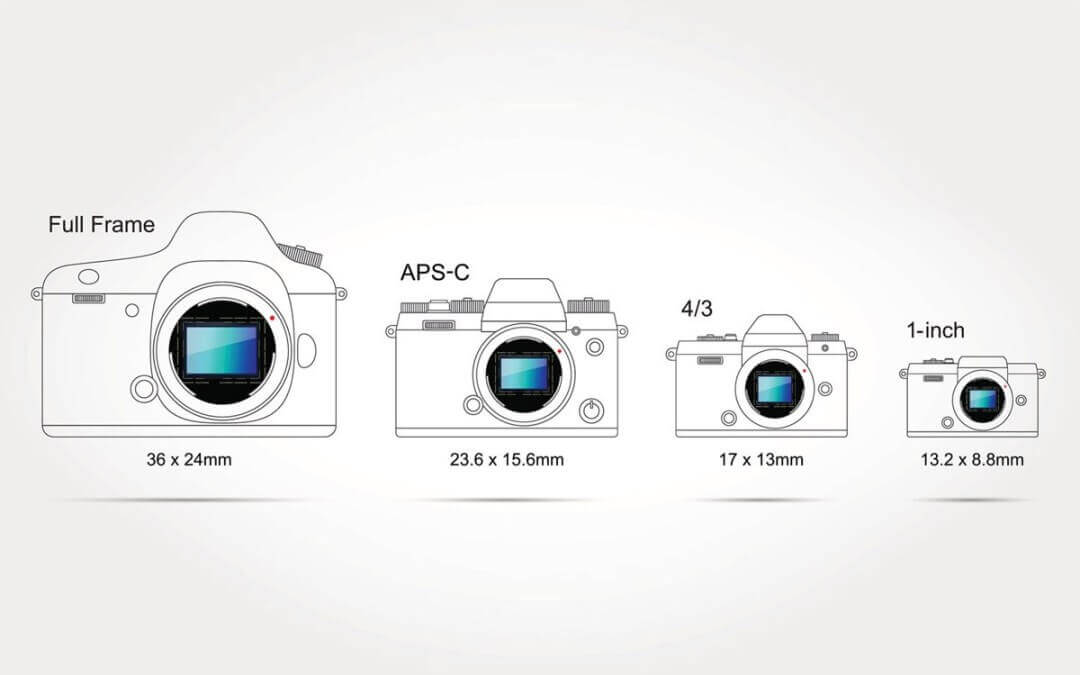
The other advantage of having a large sensor is to manage the blur in the background: the SLR is the perfect camera to make portraits clear with a nice blur behind your subject to highlight. There are other criteria that promote this blur - or bokeh effect - but the size of the sensor is important. DSLRs with a full-format sensor ( 24 × 36 equivalent ) are preferable to APS-C sensor SLRs with a smaller sensor ( about 1.5 x depending on the brand ).
Flexibility
Megapixels
Don't give in to the temptation to believe that the best reflex camera is the one with the most MegaPixels. SLR cameras with a resolution of between 12 and 18 megapixels they are absolutely excellent quality products and suitable for the vast majority of situations. If you have identified some models that tickle your interest and you still have a few dollars to add to your purchase, rather spend them to choose a full-frame sensor or a continuous shooting camera.
The only cases in which you might really need a higher resolution are landscape or fashion photographs, as they are rich in minute details, or if you plan to print only a portion of the crop box. In this case, the number of pixels on the new area may not be enough to have a good quality print.
Frames per second
Optics and lenses
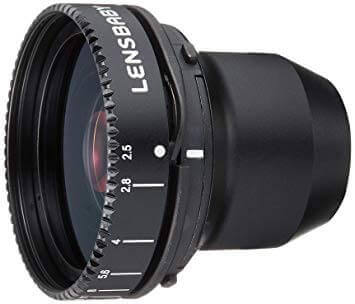 When evaluating the purchase of an SLR, consider that you will have to equip yourself with additional interchangeable lenses. If you don't want to incur this expense, but have quality photos, the only alternative is to evaluate the purchase of a bridge, that is a semi-professional camera, with quality lenses and resolutions that do not require the use of lenses because the wide-angle lens and a rather powerful optical zoom are already present in the camera body.
When evaluating the purchase of an SLR, consider that you will have to equip yourself with additional interchangeable lenses. If you don't want to incur this expense, but have quality photos, the only alternative is to evaluate the purchase of a bridge, that is a semi-professional camera, with quality lenses and resolutions that do not require the use of lenses because the wide-angle lens and a rather powerful optical zoom are already present in the camera body.
Instead, on reflex cameras, it is a condition that cannot be overcome, but the freedom that it will give you in terms of configurations, especially manual, is clearly superior. But be careful, you will have to choose professional lenses and optics, otherwise, you will vanish all the quality you could receive from the sensor.
Flip-screen
Stabilizer
When taking pictures with long exposure times or when the subject is very close by zooming, the risk is to have a photograph move. It is possible to overcome the problem thanks to the stabilizer that can be present in the sensor, therefore directly on the machine, or in the objectives. The Canon and Nikon SLRs have included it in the lenses, while Panasonic has preferred to mount it on the sensor.

Weight & Size
These two factors seem to be a detail, but it is not. If you want an SLR to start with holiday photos, you should focus on a model that is as manageable and light as possible. Otherwise, you'll find yourself with a weight around your neck all day.
But if you intend to use the camera for professional or semi-professional purposes, therefore more subject to wear, it is better to choose more resistant materials. Not only that, if you plan to use it a lot outside with the possibility of rain, cold or exposure to dust, you should choose a tropicalized machine, therefore suitable for more "extreme" uses.
FAQs
Is Canon Or Nikon Better For Beginners?
Both Canon and Nikon are reputable camera brands with a wide range of options suitable for beginners. It's important to note that choosing a camera brand is a personal choice, and both brands have their strengths and weaknesses. Ultimately, the decision should be based on your needs and preferences.
Some factors to consider when choosing between Canon and Nikon include:
- Budget: Both brands offer entry-level DSLR and mirrorless cameras at various price points. You should choose a camera that suits your budget and provides the features you need.
- Lens Selection: Canon and Nikon have different lens mounts, so you should consider the available lens selection for each brand. Generally, both brands offer a vast selection of lenses for their respective mounts.
- Ease of use: Canon and Nikon both offer user-friendly cameras suitable for beginners. However, it's important to choose a camera that you find comfortable and easy to use.
- Features: Both brands offer a range of features, including autofocus, image stabilization, and video recording capabilities. Choose a camera that has the features that matter to you.
In summary, both Canon and Nikon are excellent camera brands suitable for beginners. The decision on which one to choose ultimately comes down to your needs, preferences, and budget.
Should Beginners Use Slr Or Dslr?
As a beginner, you may wonder whether you should use an SLR or a DSLR camera. An SLR (Single Lens Reflex) camera is a traditional film camera that uses a mirror to reflect light into the viewfinder, while a DSLR (Digital Single Lens Reflex) camera uses a digital sensor to capture images.
While SLRs still have their enthusiasts, DSLRs are more popular among photographers because they offer more advanced features, such as autofocus, white balance, and exposure control. DSLRs also allow you to preview your images on a screen before you take them, making it easier to adjust your settings.
For beginners, DSLRs are generally the better choice because they offer more flexibility and control over the image. DSLRs have interchangeable lenses, which means you can choose a lens that's appropriate for your needs and preferences. Additionally, DSLRs allow you to adjust settings such as shutter speed, aperture, and ISO to create the desired effect.
However, it's important to note that DSLRs can be more expensive and require more knowledge to use properly than point-and-shoot cameras or smartphones. As a beginner, you may find a mirrorless camera with interchangeable lenses or a compact camera with manual controls to be a good compromise between ease of use and image quality.
Ultimately, the choice between SLRs and DSLRs depends on your needs and preferences. If you're looking for a more advanced camera that offers a lot of control over your images, a DSLR may be the best choice. If you're looking for a simpler camera that still allows you to experiment with manual controls and interchangeable lenses, a mirrorless or compact camera may be a better option.
Which Camera Is Best For Beginners Dslr Or Mirrorless?
When it comes to choosing a camera for beginners, both DSLRs and mirrorless cameras offer advantages and disadvantages, so the choice ultimately depends on your needs and preferences.
Here are some factors to consider when deciding between a DSLR and a mirrorless camera:
- Size and weight: Mirrorless cameras are generally smaller and lighter than DSLRs because they don't have a mirror inside. This makes them more portable and easier to carry around, which can be an advantage if you plan on traveling with your camera.
- Image quality: Both DSLRs and mirrorless cameras offer excellent image quality, but mirrorless cameras tend to have better video capabilities and can shoot faster burst rates.
- Autofocus: Mirrorless cameras often have superior autofocus performance due to the use of on-sensor phase-detection autofocus technology. However, this varies depending on the model and brand of the camera.
- Lens selection: Both DSLRs and mirrorless cameras have a wide range of lenses available, but DSLRs have been around for longer, so there may be more lenses available for DSLR systems.
- Battery life: DSLRs generally have better battery life than mirrorless cameras due to the larger size of the camera body, which allows for larger batteries.
In summary, both DSLRs and mirrorless cameras are suitable for beginners, and the choice comes down to personal preference. If you value portability and the ability to shoot high-quality video, a mirrorless camera may be the best choice. If you're interested in a wide range of lenses and longer battery life, a DSLR may be the better option.
How Do I Pick A Good Camera For A Beginner?
Choosing a good camera for a beginner can be overwhelming due to the variety of options available in the market. Here are some factors to consider when selecting a camera for a beginner:
- Budget: Determine how much you are willing to spend on a camera. Entry-level cameras for beginners can range from a few hundred to a few thousand dollars.
- Size and weight: Consider the size and weight of the camera. A smaller and lighter camera may be more comfortable to carry around and easier to use.
- Ease of use: Choose a camera that is easy to use with intuitive controls and menus. A camera that offers automatic settings and scene modes may be a good choice for beginners.
- Image quality: Look for a camera that produces high-quality images with good detail and color accuracy. This will help you to capture images that are sharp and clear.
- Lens selection: Consider the range of lenses available for the camera you are interested in. The ability to change lenses can offer more creative freedom and flexibility.
- Features: Look for a camera that has features that are important to you. This can include features like autofocus, image stabilization, and video recording capabilities.
- Brand and support: Choose a reputable brand with good customer support and a wide range of accessories available. This can help ensure that you have access to resources and support if you encounter any issues with your camera.
In summary, when choosing a camera for a beginner, consider the budget, size and weight, ease of use, image quality, lens selection, features, and brand and support. Ultimately, the best camera for a beginner is one that is easy to use, produces high-quality images, and fits within your budget.
Which Is the Best DSLR For Beginners?
There are many DSLRs available that are suitable for beginners, each with its own advantages and disadvantages. Here are a few DSLRs that are often recommended for beginners:
- Canon EOS Rebel T7: This camera is a great entry-level DSLR from Canon. It has a 24.1-megapixel sensor, an easy-to-use interface, and built-in Wi-Fi and NFC for easy sharing of photos.
- Nikon D3500: This is another popular entry-level DSLR that is great for beginners. It has a 24.2-megapixel sensor, a lightweight body, and easy-to-use controls.
- Pentax K-70: This camera is a bit more advanced than the Canon and Nikon entry-level models, but it still has a lot of features that make it a great choice for beginners. It has a 24.2-megapixel sensor, built-in image stabilization, and weather-sealed construction.
- Sony Alpha a68: This camera is a great choice for beginners who want a DSLR with advanced features. It has a 24-megapixel sensor, fast autofocus, and a tilting LCD screen.
- Olympus OM-D E-M10 Mark II: While not technically a DSLR, this mirrorless camera is a great choice for beginners who want a small and lightweight camera that still offers advanced features. It has a 16-megapixel sensor, built-in image stabilization, and a tilting touchscreen.
Ultimately, the best DSLR for a beginner depends on personal preferences and needs. Consider factors such as image quality, ease of use, and budget when selecting a camera.
Do Professionals Prefer Canon Or Nikon?
The choice of camera brand among professional photographers is a matter of personal preference, and there are many professional photographers who use both Canon and Nikon cameras.
Canon and Nikon have been the dominant players in the professional camera market for decades and both offer a wide range of high-end cameras and lenses that are popular among professionals.
In general, Canon has a larger market share among professional photographers, particularly in the fields of sports, wildlife, and photojournalism. Canon cameras are known for their fast autofocus and high-speed continuous shooting capabilities, which are important features in these fields.
On the other hand, Nikon cameras are popular among professionals in the fields of fashion, portrait, and landscape photography. Nikon cameras are known for their excellent color reproduction and dynamic range, which make them well-suited for these types of photography.
Ultimately, the choice of camera brand depends on personal preference, the specific needs of the photographer, and the types of photography they specialize in. Both Canon and Nikon offer excellent cameras and lenses that are capable of producing high-quality images, and professional photographers can achieve great results with either brand.
Why A Dslr Is Better Than A Phone?
While phone cameras have become increasingly advanced in recent years, DSLRs (Digital Single Lens Reflex) still offer several advantages over phone cameras.
Here are some reasons why a DSLR is better than a phone camera:
- Image quality: DSLRs have larger sensors than phone cameras, which allow them to capture more light and produce higher-quality images with better detail and color accuracy.
- Lens selection: DSLRs offer a wide range of interchangeable lenses, allowing photographers to choose the best lens for each specific shooting situation. Phone cameras have a fixed lens, which limits their versatility.
- Manual controls: DSLRs offer a wide range of manual controls, allowing photographers to adjust settings such as shutter speed, aperture, and ISO. This level of control allows for greater creative freedom and enables photographers to capture a wider range of images.
- Speed: DSLRs are designed for fast, continuous shooting, making them ideal for capturing action shots and events.
- Low light performance: DSLRs perform better in low-light conditions than phone cameras, thanks to their larger sensors and better low-light performance.
- Durability: DSLRs are built to withstand the rigors of professional use and are typically more durable than phones.
Overall, while phone cameras are convenient and can produce good-quality images, DSLRs still offer several advantages in terms of image quality, lens selection, manual controls, speed, low-light performance, and durability.
Can Mobile Camera Be Better Than Dslr?
While mobile phone cameras have become increasingly advanced in recent years, they still generally fall short of DSLRs in terms of overall image quality and versatility.
Here are some reasons why a DSLR is generally better than a mobile phone camera:
- Sensor size: DSLRs have larger sensors than mobile phone cameras, which allow them to capture more light and produce higher-quality images with better detail and color accuracy.
- Lens selection: DSLRs offer a wide range of interchangeable lenses, allowing photographers to choose the best lens for each specific shooting situation. Mobile phone cameras have a fixed lens, which limits their versatility.
- Manual controls: DSLRs offer a wide range of manual controls, allowing photographers to adjust settings such as shutter speed, aperture, and ISO. This level of control allows for greater creative freedom and enables photographers to capture a wider range of images.
- Speed: DSLRs are designed for fast, continuous shooting, making them ideal for capturing action shots and events.
- Low light performance: DSLRs perform better in low-light conditions than mobile phone cameras, thanks to their larger sensors and better low-light performance.
That being said, there are some situations where a mobile phone camera may be a better choice, such as when you don't have your DSLR with you or when you need to quickly capture a candid moment. Additionally, some high-end mobile phones cameras, such as those found on flagship models from Apple, Samsung, and Google, are capable of producing excellent images in certain conditions, such as bright outdoor scenes.
Overall, while mobile phone cameras can produce good-quality images in certain situations, DSLRs are generally considered to be superior in terms of overall image quality and versatility.
Is An Iphone Camera As Good As Slr?
While iPhone cameras have become increasingly advanced in recent years, they still generally fall short of DSLRs in terms of overall image quality and versatility.
Here are some reasons why an SLR is generally better than an iPhone camera:
- Sensor size: DSLRs have larger sensors than iPhone cameras, which allow them to capture more light and produce higher-quality images with better detail and color accuracy.
- Lens selection: DSLRs offer a wide range of interchangeable lenses, allowing photographers to choose the best lens for each specific shooting situation. iPhone cameras have a fixed lens, which limits their versatility.
- Manual controls: DSLRs offer a wide range of manual controls, allowing photographers to adjust settings such as shutter speed, aperture, and ISO. This level of control allows for greater creative freedom and enables photographers to capture a wider range of images.
- Speed: DSLRs are designed for fast, continuous shooting, making them ideal for capturing action shots and events.
- Low light performance: DSLRs perform better in low-light conditions than iPhone cameras, thanks to their larger sensors and better low-light performance.
However, it is worth noting that the latest iPhone models, particularly those with multiple lenses, such as the iPhone 13 Pro and Pro Max, are capable of producing very good quality images, particularly in good light. In some cases, the image quality may be good enough for casual users or those who do not require the level of image quality or versatility that a DSLR provides.
Overall, while iPhone cameras have improved significantly in recent years and are capable of producing good-quality images, DSLRs are generally considered to be superior in terms of overall image quality and versatility.
Is Mirrorless Cheaper Than Dslr?
When comparing mirrorless and DSLR cameras, the cost can vary depending on several factors, such as brand, model, features, and lenses. Generally, mirrorless cameras tend to be more expensive than entry-level DSLRs, but less expensive than high-end DSLRs.
Here are some factors that can affect the cost of mirrorless and DSLR cameras:
- Brand: Some camera brands, such as Canon and Nikon, are more expensive than others, while newer brands such as Sony and Fujifilm tend to be more affordable.
- Features: Both mirrorless and DSLR cameras come with a range of features that can affect the cost. More advanced features such as high-speed shooting, image stabilization, and 4K video recording tend to drive up the cost.
- Lenses: The cost of lenses can vary greatly depending on the brand and model. While some mirrorless cameras can use the same lenses as DSLRs, others require new lenses that can be more expensive.
- Accessories: Additional accessories such as flashes, tripods, and memory cards can also add to the overall cost of the camera.
Overall, while mirrorless cameras tend to be more expensive than entry-level DSLRs, they are typically less expensive than high-end DSLRs. However, it's important to keep in mind that cost is just one factor to consider when choosing a camera, and other factors such as image quality, size, and weight should also be taken into account.
Do Photographers Use Mirrorless Or Dslr?
Both DSLR and mirrorless cameras are used by professional photographers, and each has its own advantages and disadvantages.
DSLRs have been the industry standard for many years, and many professional photographers still prefer them because they offer reliable performance, a wide range of lenses, and a familiar handling experience. DSLRs are also generally better suited for fast-action and sports photography because of their advanced autofocus systems and fast continuous shooting speeds.
However, mirrorless cameras have become increasingly popular among professional photographers in recent years, especially those who value portability, image quality, and video capabilities. Mirrorless cameras tend to be lighter and more compact than DSLRs, making them easier to carry around all day, and they often offer advanced features like in-body image stabilization and fast autofocus systems that can rival or even surpass DSLRs.
Overall, the choice between DSLR and mirrorless cameras depends on the specific needs and preferences of the photographer, as well as the shooting situation. Many photographers use a combination of both types of cameras, depending on the job or project at hand.
Are Mirrorless Cameras Sharper Than Dslr?
The sharpness of a camera's image is influenced by several factors, including lens quality, sensor size, and image processing. Whether a mirrorless camera is sharper than a DSLR will depend on the specific models being compared and the lenses being used.
In general, mirrorless cameras have some advantages over DSLRs that can contribute to sharper images. For example, mirrorless cameras often have advanced autofocus systems that can accurately track subjects and maintain sharp focus, even when shooting at high speeds. Additionally, mirrorless cameras often have higher resolution sensors than DSLRs, which can lead to sharper images with more detail.
However, DSLRs can also produce very sharp images, particularly when used with high-quality lenses. DSLRs also have a long history in the industry and many professional-grade lenses have been developed for them over the years.
Overall, while mirrorless cameras have some advantages that can contribute to sharper images, the sharpness of the final image will depend on several factors, including the specific camera and lens being used, as well as the shooting conditions and the skill of the photographer.
Conclusion
